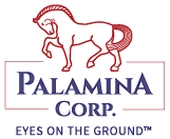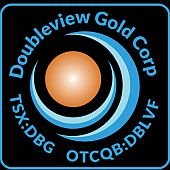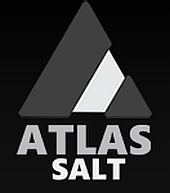 Walker River drills 12.2 m of 77.62 g/t Au at Lapon
Walker River drills 12.2 m of 77.62 g/t Au at Lapon
WALKER ANNOUNCES DRILL RESULTS FROM LAPON CANYON
Walker River Resources Corp. has released results from the reverse circulation (RC) drill program on the Lapon Canyon gold project, located approximately 60 kilometres southeast of Yerington, Nev.
Highlights include:
- RC drill hole LC16-10 intersected 77.62 grams per tonne gold over 12.2 metres uncut (15.38 g/t cut) from 54.9 to 67.2 metres.
- A second zone in RC drill hole LC16-10 intersected 48.02 grams per tonne gold over 13.7 metres uncut (7.2 g/t cut) from 1.5 to 15.2 metres.
- RC drill hole LC16-11 intersected 39.17 grams per tonne gold over 9.2 metres uncut (10.5 g/t cut) from 15.2 to 24.4 metres.
Assay
From To Length (ii) (g/t Au) Assay (i)
Drill hole (m) (m) (m) uncut (g/t Au) cut
LC16-10 1.5 15.2 13.7 48.02 7.21
Including 9.1 10.6 1.5 451 34.28
54.9 67.2 12.2 77.62 15.38
Including 54.9 56.4 1.5 227 34.28
61 62.5 1.5 207 34.28
65.5 67 1.5 106 34.28
LC16-12 15.2 24.4 9.2 39.17 10.53
Including 15.2 16.7 1.5 207 34.28
16.7 18.2 1.5 13.55
22.9 24.4 1.5 12.95
LC16-09 13.7 18.3 4.5 9.69
LC15-04 56.5 61 4.5 8.25
Notes
(i) Grades are cut to 34.28 g/t Au (one ounce per ton).
(ii) True widths are approximately 80 per cent in LC16-09, 10 and 12.
They are 70 per cent in LC16-04.
RC drill holes 9, 10 and 12 were drilled in the Upper Lapon Rose zone in an altered sheared and faulted granodiorite and quartz monozonite porphyry. Alteration consists of sericite, FeOx and MnOx, secondary sulphidization, intruded by a series of flat-lying altered quartz porphyry dikes.
RC drill hole LC15-04 intersected a mineralized crossfault structure in previously unmineralized diorite.
RC drill hole LC16-10 was designed to verify the position of previously reported, presently inaccessible mined-out area. The drill hole successfully intersected the mined-out stope at the reported location and verified the width at about eight metres at a depth of 68 metres. It is significant that the gold mineralization encountered in LC16-10 was encountered from 54.9 to 67.1 metres, only 0.8 metre from the stope.
The Lapon project consists of 36 claims (720 acres) situated in the Wassuk range, easily accessible by secondary state roads from the main highway (25 kilometres). A state grid power transmission line passes within three kilometres of the property.
The Lapon project is located within the Walker Lane shear zone, a 100-kilometre-wide structural corridor extending in a southeast direction from Reno, Nev. Within this trend, numerous gold, silver and copper mines are located, notably the historic Comstock Lode mines in Virginia City, the past-producing Esmeralda/Aurora gold mine, with reported production of about one million ounces, as well as the Anaconda open-pit copper mine in Yerington. Nevada Copper’s new mine, Pumpkin Hollow, is also located within the Wasuk range about 25 kilometres north of Lapon.
The Lapon project is cut by a series of steeply dipping crossfault structures cutting across the Walker trend, analogous to other crossfault structures responsible for many gold and base metal deposits in the world. These faults are heavily sheared and altered (sericite, iron oxides) with abundant silica. They vary in width from 60 to 300 metres. Four of these structures have been discovered at Lapon, and at least two can be traced for over four kilometres. Gold mineralization is located within vertical en-echelon structures within these faults. At least one of these shear zones, the Lapon Rose zone, was the site of underground development, and shows a minimum strike length of four kilometres, has a width of over 60 metres and has a vertical extent of at least 650 metres.
Walker, along with its partner Nevada Canyon Gold (see news release dated Sept. 16, 2015), intends to pursue an aggressive drill program on this well-located, highly prospective gold project. About 6,000 metres of planned drilling has been outlined, with about 1,800 metres completed to date.
Small-scale high-grade mining began on the project in 1914. Approximately 600 metres of drifts and raises were developed from two adits and a two-stamp mill was built. Further limited underground work was carried out, returning numerous assay values in the range of one ounce per ton, with a sample at the end of an adit returning 20.6 ounces per ton (National Instrument 43-101, Montgomery and Barr, 2004).
These additional drill results continue to confirm the potential for the emplacement of significant gold mineralization on the Lapon project. Further results will be released as available.
Sampling methodology, chain of custody, quality control and quality assurance
All sampling was conducted under the supervision of the company’s project geologists and the chain of custody from the drill to the sample preparation facility was continuously monitored. A blank or certified reference material was inserted approximately every 10th sample. The Lapon samples were delivered to ALS Minerals’ certified laboratory facility in Reno, Nev. The samples were crushed, pulverized and the sample pulps digested and analyzed for gold using fire assay fusion and a 50-gram gravimetric finish. Higher-grade samples used a one-kilogram screen fire assay with screen to 100 microns and 50 g gravimetric finish
The scientific and technical content and interpretations contained in this news release have been reviewed, verified and approved by E. Gauthier, Geol, Eng (OIQ), a qualified person as defined by NI 43-101, standards of disclosure for mineral projects.
http://www.wrrgold.com/
































